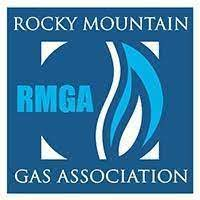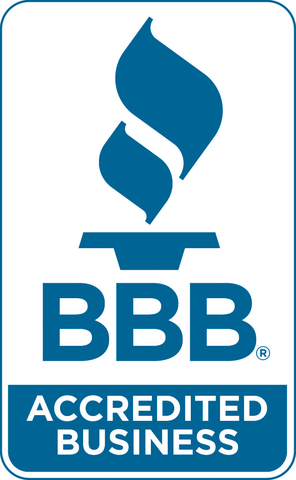A gas fireplace is a wonderful addition to any home, providing warmth and a cozy atmosphere. However, like all appliances, it can encounter problems that need timely resolution. Understanding how your gas fireplace works and knowing the common issues that may arise helps maintain its efficiency.
Understanding How Your Gas Fireplace Works
A gas fireplace operates by burning natural gas or propane to create heat. It consists of several key components that work together to provide warmth and a cozy ambiance.
- Ignition System: The ignition system is responsible for lighting the gas. Most modern gas fireplaces use an electronic ignition system, which is typically activated by a wall switch or remote control. Older models may use a standing pilot light that burns continuously.
- Burners: The burners are where the gas is mixed with air and ignited to produce flames. They are usually designed to mimic the appearance of a traditional wood-burning fireplace, complete with ceramic logs for a realistic look.
- Thermostat Control: Many gas fireplaces come with a built-in thermostat that allows you to set and maintain a desired temperature. The thermostat controls the flow of gas to the burners, increasing or decreasing the flame height as needed to maintain the set temperature.
- Ventilation System: Proper ventilation is crucial for safely operating a gas fireplace. There are two types of ventilation systems: direct vent and ventless. Direct vent systems expel combustion gases outside through a chimney or wall vent. Ventless systems, on the other hand, are designed to burn gas so efficiently that they release minimal combustion byproducts into the room.
Understanding these components helps identify issues and maintain your gas fireplace for optimal performance.
Identifying Common Problems with Gas Fireplaces
Gas fireplaces, like any other appliance, can encounter various issues. Recognizing these problems early can prevent more severe damage and ensure your fireplace operates safely and efficiently.
- Ignition Failure: One of the most common problems is the fireplace not igniting. This can be due to a faulty ignition system, a disrupted gas supply, or a dirty pilot light.
- Strange Odors: Unusual smells coming from your gas fireplace can indicate problems. A rotten egg smell may suggest a gas leak, while a musty odor might mean there is excess moisture or mold in the unit.
- Inconsistent Flame: If the flame is flickering or appears weak, there could be issues with the gas pressure, clogged burners, or a malfunctioning thermocouple.
- Soot Buildup: Soot on the glass or walls of the fireplace can indicate incomplete combustion. This problem can result from improper gas-to-air ratio or clogged burners.
- Noise: Unusual noises such as popping, banging, or whining can occur during operation. These noises can be caused by issues like air in the gas line, dirty burners, or loose connections.
Identifying these common problems helps you address them more effectively, whether through DIY solutions or by calling our professionals for repairs. Proper maintenance and timely attention to these issues ensure your gas fireplace remains a reliable source of heat and comfort.
DIY Solutions for Minor Issues
Many minor gas fireplace issues can be resolved with some basic troubleshooting and maintenance. Here are a few simple DIY solutions:
- Cleaning the Pilot Light: If your gas fireplace doesn’t ignite, the pilot light may be dirty. Turn off the gas supply and use a small brush or compressed air to clean any dust or debris from the pilot light.
- Checking the Thermostat: Ensure that the thermostat is set to the desired temperature. Sometimes, a simple adjustment can resolve ignition issues or inconsistent flames.
- Inspecting the Gas Valve: Make sure the gas valve is fully open. A partially closed valve can cause poor flame quality or failure to ignite.
- Replacing Batteries: If your gas fireplace uses a remote control, check and replace the batteries if necessary. Dead batteries can prevent the fireplace from turning on.
- Cleaning the Burners: Over time, burners can become clogged with debris. Turn off the gas and remove the logs and burners. Clean them gently with a soft brush and reassemble the unit correctly.
- Tightening Loose Connections: Unusual noises can often be traced back to loose connections. Check all connections and tighten them as needed.
These DIY solutions can help address some of the most common minor issues with your gas fireplace. Remember to always turn off the gas supply and follow safety precautions when performing any maintenance tasks.
When to Call Our Professionals for Repairs
While DIY fixes can resolve minor issues, some problems require expert attention. Knowing when to call our professionals ensures the safety and efficiency of your gas fireplace.
- Persistent Ignition Problems: If you’ve tried cleaning the pilot light and checking the gas valve but still face ignition issues, it’s time to call our professionals. Persistent problems may indicate deeper issues with the ignition system or gas supply.
- Gas Leaks: If you smell a rotten egg odor, it could indicate a gas leak. This is a serious safety hazard. Turn off the gas supply immediately and call our technicians to address the issue safely and promptly.
- Soot Buildup: Excessive soot buildup can suggest incomplete combustion, which may be due to an improper gas-to-air ratio or clogged burners. Our technicians can diagnose and fix the problem to ensure safe operation.
- Pilot Light Won’t Stay Lit: If the pilot light repeatedly goes out, it could be due to a faulty thermocouple or gas pressure issues. Our professionals have the tools and expertise to fix these problems effectively.
- Complex Repairs: Issues like damaged burners, broken thermocouples, or malfunctioning thermostats require specialized knowledge and tools. Our professionals can perform these complex repairs safely and efficiently.
- Annual Maintenance: Regular professional maintenance helps keep your gas fireplace in good working condition. Our professionals can inspect, clean, and service your unit to prevent future issues.
By recognizing when to call in our experts, you ensure your gas fireplace remains a safe and efficient source of heat.
Conclusion
Troubleshooting common gas fireplace problems can help maintain the reliability and safety of your unit. Understanding how your gas fireplace works and being able to identify common issues are the first steps toward effective maintenance. DIY solutions can address minor problems, but knowing when to call our professionals is crucial for more complex repairs.
Maintaining your gas fireplace involves a combination of regular care and professional expertise. By addressing issues promptly and ensuring proper maintenance, your gas fireplace can continue to provide warmth and comfort in your home.
For expert assistance and reliable repairs, contact S.O.S. Heating & Cooling. Our professionals are here to help you keep your gas fireplace in Holladay running smoothly and safely.















